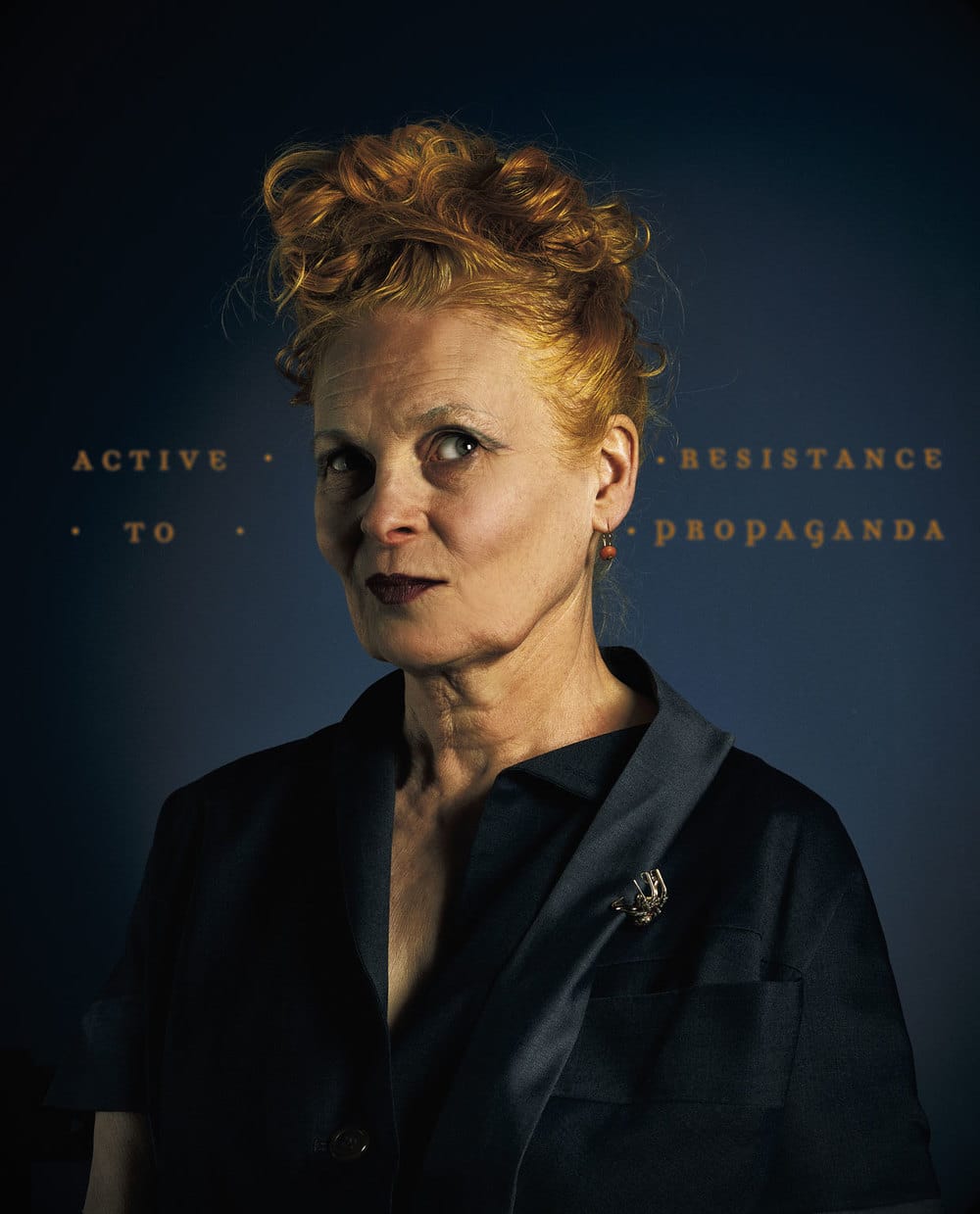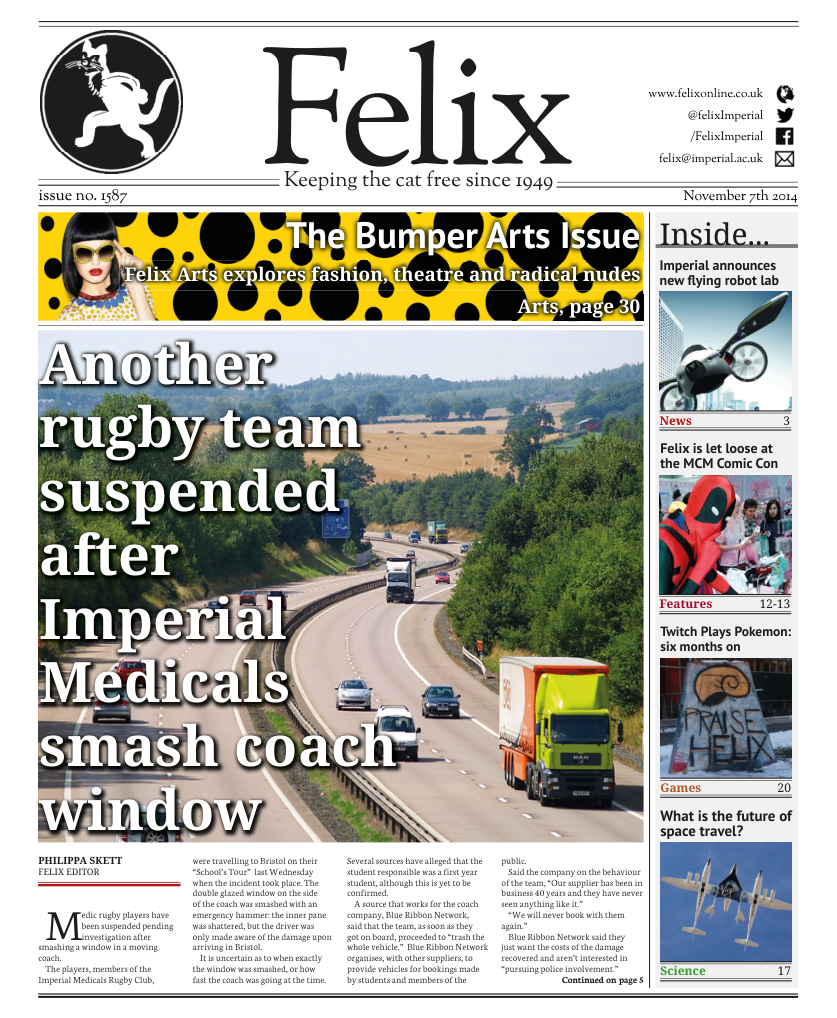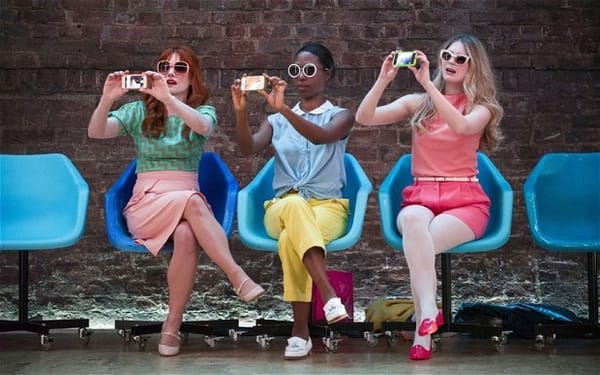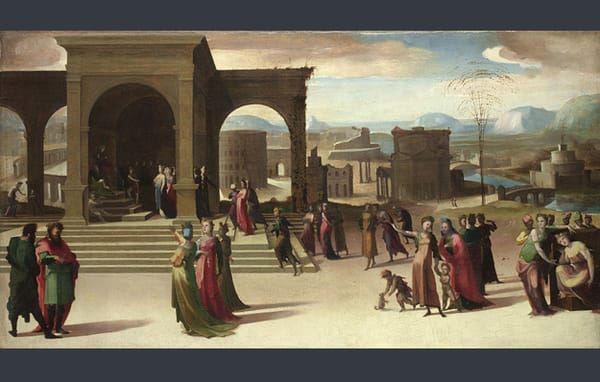Fashionable Women, But No Powerful Punch
Can fashion be a force for liberation? Fred Fyles investigates

“There can be no doubt that the hand which first encloses the waist of a girl in these cruel contrivances, supplying her with a fictitious support, where the hand of God has placed bones and muscles that ought to be brought into vigorous action, lays the foundation of bitter suffering.” Thus spoke Charlotte Elizabeth Tonna, a popular novelist, on the pretty prisons that are corsets. The year of the declaration? 1841, making it a fitting start to the Design Museum’s retrospective of the relationship between women, clothes, and feminism, succinctly titled Women Fashion Power.
Beginning with a hall of feminist icons that range from the obvious (Joan of Arc) to the contemporary (Michelle Obama), to the questionable (Margaret Thatcher), the exhibition aims to chart the developments in women’s fashion, linking it to the changes in their social situation. It begins with the aforementioned corsets, the cruelty of which is apparent from their dimensions alone. Some of them have a waist size of just 19 inches; luckily the Victorians were lenient on expectant mothers – the maternity corset giving the wearer a comfortable 24 inches of breathing room. One long-line Edwardian corset employs a ‘wide border of satin, embroidered bows, tapered boning in the back casing, and four strong rubber grip suspenders’; it’s described as ‘lightweight’.
Surely things have changed for the better? Perhaps. Trends in women’s fashion have certainly changed, but this exhibition does little to convince the viewer that it has played a key role in feminist liberation. The ‘flapper’, whose typical dresses are displayed in the 1920s section, was by and large a male invention. No doubt actual, liberated flappers did exist – Louise Brooks and Josephine Baker are two notable examples featured – but the trend was engineered largely by patriarchal society, which used the ‘flapper’ as another example of the flippancy of women.
Similarly, the icons of the golden age of Hollywood – Marlene Dietrich staring down the camera like a marble statue; Joan Crawford, with her mad popping eyes, piercing a hole through the lens – are held up as examples of women with power, and yet the control exerted over them by the major studios is never mentioned, a curious omission for an exhibition themed around the liberation of women.
Other examples of men controlling how women dress are present throughout the exhibition, tainting everything: A Beatles fan-mag whose front cover promises to teach you ‘How To Make Him Like You’; photos of Sam Cam, that most insipid of public figures, smiling dead-eyed in a M&S shift; and innumerable names of male designers.
From Pierre Cardin to John Galliano, it is difficult to move for male fashion designers. Even Karl Lagerfeld, whose feminist credentials are beyond belief (moving on from criticising Adele’s weight, his most recent show saw emaciated white women donning a horrific pastiche of the Suffragettes’ legacy to shift overpriced clothing), gets a look in.
Even those female designers featured don’t come across that well; the most heavily featured designer is – as you would expect – Vivienne Westwood, that grand dame of anarchy who continues to ensure that Scotland’s remaining tartan factories are kept in business.
However, in the description the museum gives, Dame Westwood is said to have evolved from her subversive origins as an engineer of punk into an internationally recognised champion of British design and identity. This description does little justice to Westwood, who continues to be a subversive force of seismic proportions well into her 8th decade.
That being said, there are some moments of clarity and vision within the exhibition: a highlight is the section on the Suffragettes, whose approach to uniform could be seen as the first modern-day example of brand awareness. Choosing white, purple, and green as their colours, the members of the WSPU dressed in smart formal wear, so that the public could not dismiss them as riff-raff. As was to be expected, public reaction to these soldiers of suffrage was largely negative, and the exhibit includes a series of cartoons deriding the movement.
Unfortunately, the Design Museum seems to conflate ‘Power’ with ‘Money’; perhaps an easy mistake to make in our capitalist society, but one that robs the show of any possibility of nuanced debate. We are told that Coco Chanel made free-form fashion popular, liberating innumerable French women, but how many Parisian charwomen could afford the prices? They exclaim that the opening of Selfridges in 1909 was a boon for women, since it provided an area where they could meet up and spend their leisure time, but as we have seen from the recent BBC 4 series on shopgirls, such stores would only be a liberated paradise to those who weren’t shackled to drudgery. The First World War, during which women filled the vacuum in society left behind by those at the front, is seen as a golden time for liberated women’s fashion, but fails to recognise that it was also a time when women were recognised as a great source of untapped capital.
Above all, it is this lack of nuance that is the downfall of the exhibition. Towards the back of the space, there are a selection of outfits, chosen by a consortium of 26 influential women, whose spheres range from media, to politics, to global finance. On the surface this seems like a positive thing: a chance for powerful women, whose clothing choices are constantly under scrutiny, to have a conversation about what fashion means to them on their own terms.
However, to the side of this exhibit a series of pages detail interviews with the women, which serve to totally destroy any grand ideas the exhibition may have had. In the opening to the exhibit a photo of Angela Merkel is sandwiched between Thatcher and Obama, and the description seems to lament that fact that so much attention is paid to the most powerful woman in the world’s clothing. In light of this the interview questions seem weird: why should we want to know how many pairs of shoes Anna Hidalgo, mayor of Paris, has? Are we really interested whether Camila Batmanghelidjh has a personal shopper? I think not.
Women. Fashion. Power. Three big themes, which could fill countless textbooks and essays, are crammed into this small space, whose horrifically confusing layout – designed somewhat embarrassingly by Zaha Hadid – does it no favours. In order to fit in the last 150 years of women’s history, the Design Museum have had to remove any nuance they may have had, swapping political and ethical discourse for photos of Jane Fonda, a decision that works against the exhibition. Ultimately, the show features a lot about women, and a lot about fashion, but lacks a powerful punch.
Women Fashion Power runs at the Design Museum until 26th April 2015.










